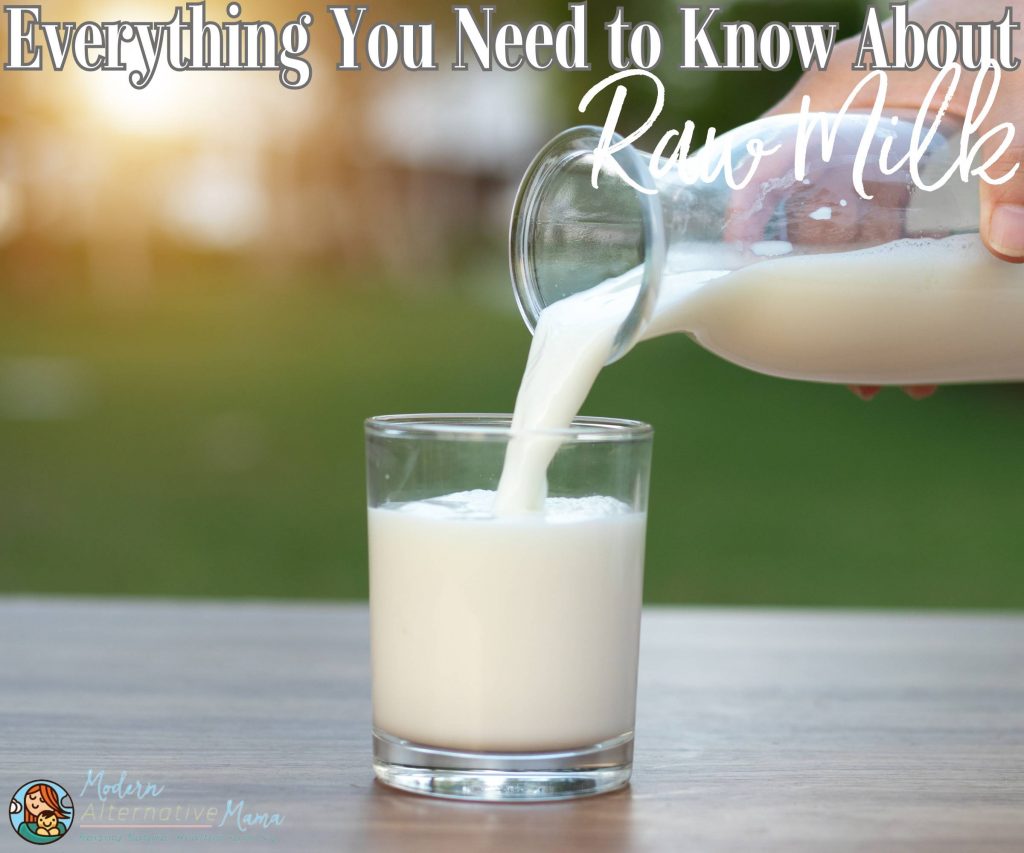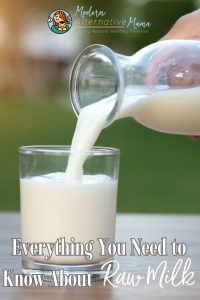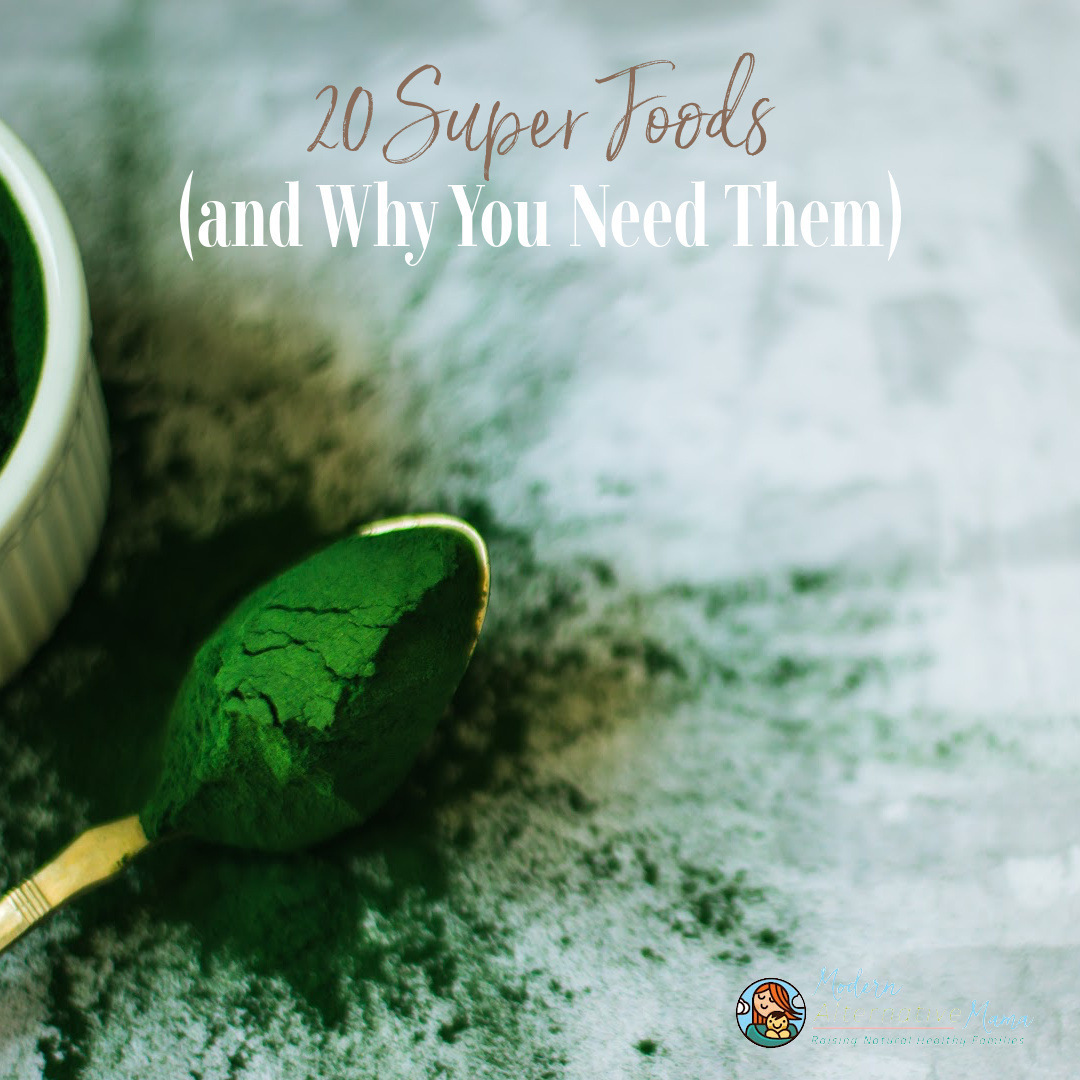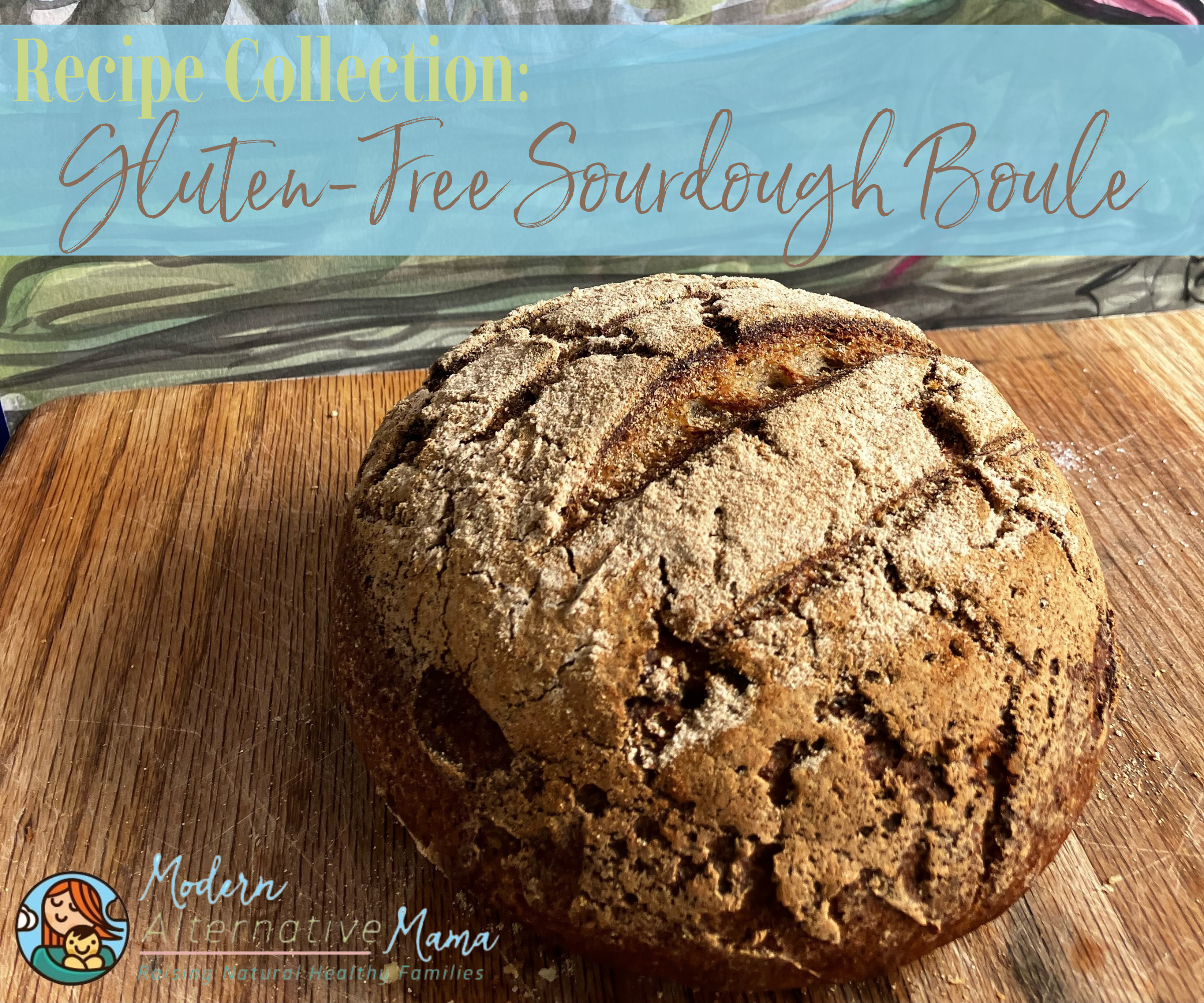Written by Kate Tietjethat the information out there is so conflicting, and people just aren’t sure how to evaluate it!
That’s a problem.
People want to do what is best and what is right for them. But when they keep seeing such conflicting information, they just want to give up. It’s too time-consuming and confusing to keep looking for answers when there’s no consensus. That’s sad!
It’s also, unfortunately, true that many of the things I promote here are considered non-mainstream, and there are all kinds of campaigns out there against them (raw milk, delayed/skipped vaccines, natural medicine, etc.). Many people just starting to look into these things may have serious reservations and feel very uncomfortable about making these choices, even if they think they should, because of the types of propaganda.
I’m going to help you out over the next several weeks. I’m starting a new series called “Don’t Believe the Propaganda,” which will look at various issues in the health and wellness arena. I’ll show you the science out there, the types of statements made by “official” sources — and what questions you need to ask about them before believing them. I’ll show you the tricks they use to cause doubt in your mind.
This series isn’t intended to convince you that any particular decision on these issues is right for you. That is up to you. It is only intended to help you see through some of the confusing language out there so you can better sort through it and identify the truth for yourself.
Raw Milk is Dangerous?
To hear the mainstream media tell it, raw milk is one of the most dangerous foods out there, and you shouldn’t have a right to access it, ever. Setting aside that food choice should be your right, not the government’s job to dictate, there’s a lot of misinformation and propaganda flying around out there.
According to the FDA, just 800 people have become sick from raw milk…since 1998. That’s about 67 people per year, and there were no deaths. Far more people die in car accidents (around 40,000 per year). More people die by being struck by lightning (about 77 per year)… And those are deaths, whereas, with raw milk, we only look at illness. Over 11,000 people per year are sickened by pasteurized milk. Just to put it into perspective for you.
Even then, let’s ask: how many of these illnesses were definitively tied to raw milk, and how many were suspected? Were the people tested to confirm what bacteria was causing their symptoms? Was the milk itself tested?
Over 3 million people in the U.S. drink raw milk regularly…about 1% of people (most estimates say 1 – 3%, but because a lot of raw milk consumption is underground, true numbers aren’t really known). Yet we don’t see people getting sick at high rates, and they’re not dying. About 0.0002% of people who drink raw milk will become sick from it (assuming a rate of 1%). About 0.0004% of people who drink pasteurized milk will become sick from it…or twice as many.
Let’s look at some quotes from the FDA’s official site and ask some questions about them:
“This raw, unpasteurized milk can carry dangerous bacteria such as Salmonella, E. coli, and Listeria, which are responsible for causing numerous foodborne illnesses.”
- Raw milk can contain these bacteria…but how likely is it? How many raw dairies have been tested, and their milk was found to contain these?
- Raw milk only contains these bacteria if it becomes contaminated; they are not naturally present. How does this contamination occur? Do raw dairies take steps to prevent this contamination? If so, what are they, and how successful are these measures? Has the FDA tested the milk from raw dairies regularly to know?
- Do these bacteria occur in other foods? Have they caused outbreaks because of those foods becoming contaminated? If so, what is the percentage of people sickened/killed by those outbreaks vs. raw milk contamination?
As you see, it’s not so cut-and-dried!
“While most healthy people will recover from an illness caused by harmful bacteria in raw milk – or in foods made with raw milk – within a short period of time, some can develop symptoms that are chronic, severe, or even life-threatening.”
- How many of the 800 cases in the last 12 years have died? (None)
- How many have developed chronic symptoms? And how many of these were proven to be linked to raw milk?
“First developed by Louis Pasteur in 1864, pasteurization kills harmful organisms responsible for such diseases as listeriosis, typhoid fever, tuberculosis, diphtheria, and brucellosis.”
- Was pasteurization invented to be used on milk? (No, it was invented for use in distilleries)
- Are we concerned about any of these illnesses being in milk today? If yes, why? Is there a way besides pasteurization to prevent these organisms from being in milk?
- How does the modern pasteurization process compare to the process invented in 1864?
- Is pasteurization foolproof? Can any organisms or diseases survive the process? If so, are they potentially harmful? How often would this occur? How often has it occurred (illness from pasteurized milk) in the last 10 years?
“Research shows no meaningful difference in the nutritional values of pasteurized and unpasteurized milk.”
- Where is the citation/study proving this is true?
- What does “meaningful” really mean in this case? (Likely, it means that the levels of macronutrients are roughly the same)
- Does pasteurization change the bioavailability of nutrients — the ability of the body to absorb them? (This is more important than the actual levels)
- Are there any components beyond the ‘nutritional values’ stated on the label present in raw milk and not pasteurized? If yes, what are they? What role do they play in human health, if any?
- Are these ‘nutritional values’ being evaluated on milk from equal sources before any sort of treatment? i.e. grass-fed vs. grass-fed? Or was it evaluated on standard CAFO milk vs. grass-fed raw? How does the cow’s feed affect nutritional values, if any? Does pasteurization impact the nutritional values of milk from cows fed the same diet?
“Pasteurization DOES save lives”
- If no one has died from raw milk in the last 10+ years…how do we assess that pasteurization actually had any impact on ‘saving lives?’
As you can see, these quotes from the FDA simply are not as straightforward as they seem. There are a lot of questions that one must ask before accepting these statements as truth.
Then, there’s the issue of how some might respond to the questions above. It’s important to consider that and have an answer.
- “What if your family was the one who got sick or died?” — Death or serious illness from contaminated milk is, first of all, highly unlikely. Second, there are much, much greater risks that we take every day (such as getting in a car) or even drinking pasteurized milk! Anything we do in life is a calculated risk, which isn’t even a terribly great risk.
- “If we didn’t pasteurize milk, people would die.” — Prove it. People aren’t dying from raw milk now. The only way they would is if unhealthy animals were producing milk in unclean conditions, which was sold raw. Any dairy that did this would be quickly shut down and even sooner avoided by consumers. Besides, people are dying from pasteurized milk…so clearly, that’s not a perfect solution!
- “You don’t have the right to feed that to your children and risk their health.” — Last time I checked, parents decide what to do with their children, barring abuse/neglect situations. That means they could feed their child McDonald’s daily if they wanted to. As that’s a much greater and more pervasive health risk than raw milk, worry about that instead.
There are a lot of other questions. But from all this information here, it’s pretty clear that, at the least, raw milk isn’t the danger they’d have us believe it is. This means that regardless of whether or not it really has amazing health benefits (another topic entirely), we should have the freedom to choose to drink it if we want to. With that said, if you think raw milk is the right fit for you and your family, you’ll need a raw milk finder since the FDA has made it so hard to source.
What do you think? Do you choose to drink raw milk? Why or why not?








We have been consuming raw milk for about three years now. Many families I know also consume raw milk and none have ever gotten sick from it. I love driving out to the farm where I buy my milk and seeing the cows grazing in the fields. I KNOW the cows that give our milk! I know what thier living conditions are, I know what they eat and I stand there as my milk jugs are filled and watch the farmer meticulously clean everything that the milk may have dribbled on as well as the spout that the milk came out of. They are VERY careful to keep everything very clean so that no harmful bacteria has a chance to contaminate. I wonder how careful farmers are who are sending thier milk out to be pasturized? Who don't have consumers coming in at any hour of any day seeing how the animals are treated and fed and housed? I am MUCH more comfortable with knowing where my food is coming from than blindly grabbing a gallon at the supermarket.
I have been drinking raw milk for the majority of my life (42 years now), having been raised on a dairy farm and seeking a source of raw milk now that my dad is no longer farming. I have never in 42 years gotten sick from raw milk. On the contrary, I was a very healthy child and enjoy good health as an adult. I would not serve my children pasteurized milk.
I can't find raw dairy in Ohio even through shares, so sadly I use very little milk. I'd love a mini Jersey, but that option just isn't realistic for me right now. My mother loves to drink milk, but is afraid of the idea of raw milk — and she is a sickly diabetic with heart disease.
Becca,
Where in Ohio? I know lots of places to get raw milk here. Send me an email.
I live in Ireland & while it is currently legal to buy raw milk the government want to have a ban in place by November. I wouldn't say there is a huge raw milk drinking community in Ireland but the fact that the government has been trying to keep the proposed ban to themselves has caused a lot of objection so hopefully the ban will never come. It has been suggested that they regulate the raw milk suppliers like in the U.K but the government don't seem to like that option even though they already regulate the raw cheese producers.
I am very very lucky that I live near one of the raw cheese producers & that is where I get my milk. I see the cows, their living conditions & the way the farm is cared for. Their milk is tested 3 times weekly so I know it's good and an added bonus is that I am supporting local business. Dairy farmers get 33 cent per litre of milk in this country with the cheapest milk selling for 99 cent a litre in the shops. I pay slightly less than 99cent per litre so I save money & the farmers gets more. Bonuses all around.
I am an advocate of raw milk but I do have to say we can't compare how many people die in car accidents to the amount that are sickened with raw milk, b/c I would say a small part of the population drinks raw milk, and many drink none, whereas nearly everyone in the population gets in a vehicle.
It is illegal in my state…would you say pasteurized organic (as opposed to ultra pasteurized) would be the next best choice if consuming cow's milk? I am torn as to what to give my girls. My husband doesn't drink milk at all, and I drink almond milk. My 9-month-old drinks my milk :), but we have waited to give my 3-year-old anything but pasteurized organic milk because I am scared she will have an allergic reaction to almond milk. The pediatrician recently suggested we try dairy-free with her for a few weeks b/c….not wanting to be tmi…her very loose stools. It has been hard b/c she loves milk now, and she wouldn't drink coconut milk when I bought it. 🙁
Julia,
Perhaps not. But the comparison to pasteurized milk illnesses by percentage of drinkers is absolutely valid. And that is a critical piece of information, since pasteurization is promoted as the 'solution' to the 'dangerous' raw milk!
Erin,
Hmm…would she drink coconut milk if you put chocolate or strawberry in it? My kids will often drink milk if I mix some raw honey and strawberry into it. If she's reacting to milk I wouldn't give it to her. Is there a source of grass-fed, low-temp pasteurized milk near you? Is there a way around the raw milk law? There usually is, in most states. But I'd stick with the coconut milk and see if flavoring it would help her at all. If not…she doesn't need to 'drink' milk anyway, there are still raw cheese and yogurt and such when/if she can tolerate that.
I just found your blog today & I love it!! I have been reading it "cover to cover" 🙂 I'm hearing a LOT about raw milk lately. I am very interested in it, but just learned that it is illegal in North Carolina. I did find a farm nearby on Eat Wild that will sell raw goat's milk for soap making, pet food, etc… Is raw goat's milk as good as raw cow's milk or should I hold out?
Have a blessed evening!
We drink raw goats’ milk from our own goats. 🙂 My girls love it! I have been a little concerned about my two-year-old being intolerant in some way to it though. She has the “allergy shiners” under her eyes and loose stools. She has also been complaining of her legs hurting, like her calves. The idea of cutting dairy is a little frightening to me and I was wondering what your opinion was.
There’s something bothering her. It could be the goat milk, or it could be grains/gluten, or any number of things. The dairy or grains are probably the top two options, though. You might try eliminating one of them, whichever is easier, to see if it does help her. If you find an intolerance, it might be worth it to address gut health with probiotics and possibly the GAPS diet so that down the road, she’s able to overcome the intolerances.
Raw milk is illegal to sell here in MI, but we have our own animals so thankfully we have our own dairy. Both of my parents we raised on raw dairy. I am thankful for and proud of our families traditions. By the way my mother was one of eleven children born at home and raised on a dairy farm where they all lived on raw milk. No one was ever ill from dairy products.
I can’t seem to find raw milk where we live in Ohio (Champaign County area), but we have a local farm advertising pasteurized non-homogenized milk with no mention of being organic. Would this still be better than the standard organic milk from the store? Does the expiration date differ?
Hi Beth,
I would ask more questions. How high a temp. is it pasteurized at? What do they feed their animals?
I am sure there is raw milk in your area or near it. I know of sources in Delaware county for sure.